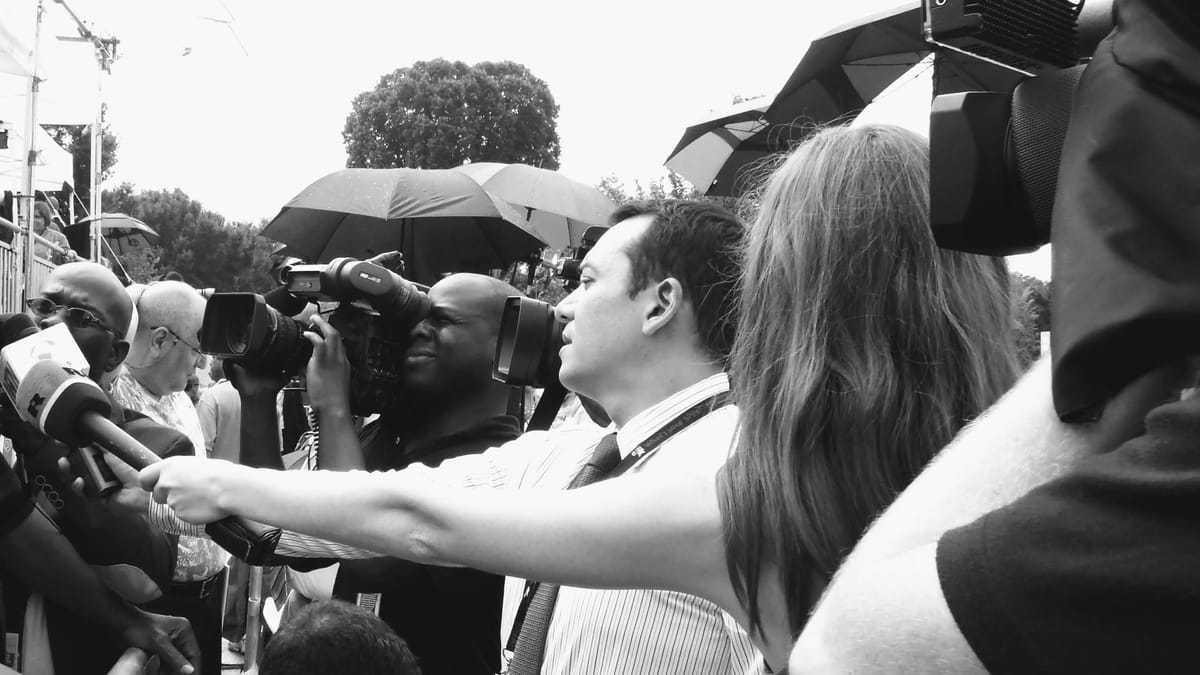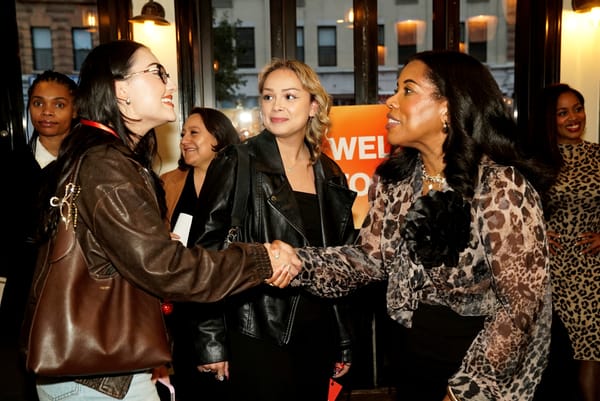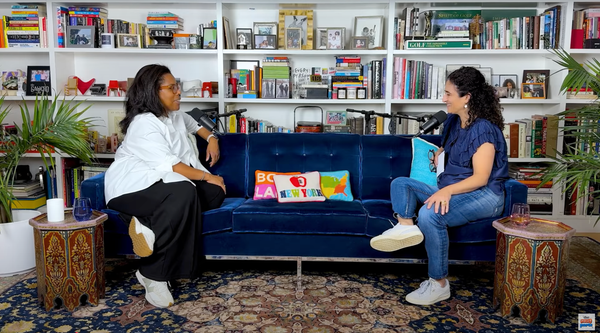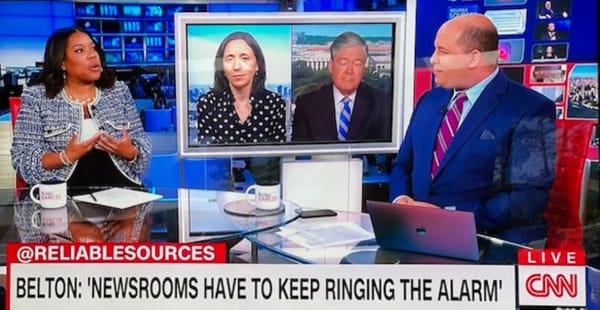How to Destroy the Free Press: A Tragedy in Three Acts
When the press took down a sitting president, the die was cast — mainstream media had to be destroyed.

It was too powerful.
After the 1960s and 70s, the press had ultimately influenced the end of an unpopular war in Vietnam, the passage of monumental Civil and Voting Rights legislation, the end of government codified racial segregation, the end of Jim Crow, the promotion for equal rights for women through programs like Title IX and Affirmative Action (which has actually benefited white women more than any other group), and, finally, the end of Republican Richard Nixon’s presidency, when in 1974 he resigned from the White House rather than face an inevitable impeachment over the coverup of the Watergate break-in reported out by the storied Washington Post.
The press did this by doing what it was meant to do when done right — report the truth. Report what is actually happening in an unvarnished and impartial way. Speak truth to power and hold those in power accountable. The press was not perfect — sexism was rampant to the point that many newsrooms were hostile work environments for women. Drinking, drug use, and mental health issues were rife. Mainstream publications didn’t start hiring Black journalists with any regularity until the 1960s, and many were hired from Black publications to cover the Civil Rights movement. These seminal writers and reporters would go on to found the National Association of Black Journalists, which to this day, works to protect, promote, educate, and organize Black people in media.
But even with these issues, the press was then defined by its near religious devotion to the truth. The truth at all costs. The truth even when it hurts. And it was a useful tool for those long exploited, harmed, or even destroyed by systemic issues in our country — from racism to sexism to various forms of xenophobia, homophobia, classism, religious discrimination, and other attacks on marginalized groups. And it was that truth — that America had problems around race, sexuality, religion, and gender, despite its “founding” as a “melting pot” nation of freedom-loving immigrants, pretending like its issues of class, slavery, and racial segregation, or genocide simply weren’t there.
Well, television showed the world America’s true face. A face that spat on Black school children just trying to get an education. A face that beat up and arrested people for wanting a mediocre sandwich at a “Whites Only” lunch counter. A face that participated in the deaths of more than 2 million Vietnamese people in a proxy war with the former Soviet Union. A face that shot protesting students at Kent State University. A face that killed and mutilated 14-year-old Emmett Till, then let his killers walk free. A face that blew up little Black girls in a church and terrorized Black people in Birmingham, Ala. so much they called it “Bombingham.” A face that assassinated two Kennedys — one a sitting president and the other running for president, and prominent Civil Rights Activists and leaders in Dr. Martin Luther King Jr., Malcolm X, and so many others.
It wasn’t a fluke that things had to change because the media showed that we needed to change or the country would not survive.
Reality Bites
But Nixon was different. He was a sitting president. He was the most powerful man in America and, by extension, the world. And if you think Nixon, or any of his supporters, ever got over him having to resign in disgrace largely due to the reporting of The Post, you would be wrong.
They realized quickly who their true enemy was reality — and the press reporting that reality.
The men cite Geoff Shepard’s book, “The Nixon Conspiracy: Watergate and the Plot to Remove the President,” and assert that Nixon was the first victim of “lawfare” in the United States. The real Watergate conspiracy, in their view, was a corrupt “Deep State-big media alliance” wherein Democrats wrongly brought down a Republican president.
Stephen Colbert used to joke when he was hosting “The Colbert Report” on Comedy Central that reality had a “liberal bias.” And if you mean policies that actually harm and discriminate against people are grossly unpopular and that a lot of those unpopular policies (trickle down economics, segregation, etc.) are popular with greedy racists, then yes, reality might seem that way. The truth was not on their side.
You can’t control reality. But you can control a narrative. And the best way to control a narrative is to control the narrator. Roger Ailes, who worked for Nixon as his “executive producer for television,” realized this. The media — or in this case, television — was seen by Ailes and Nixon as a useful tool if you could manipulate it. A media operative, Ailes would go on to work for Ronald Reagan and others, eventually co-founding Fox News with a foreign interloper, the Australian-born Rupert Murdoch.
How Fox went from a fledgling news source to the most popular and problematic cable news network in history has been well-reported. What isn’t talked about as much are the three things that had to happen to allow for a conservative-leaning network like Fox to exist —
- The creation and success of CNN, and its ripple effect
- The end of “equal time,” the fairness doctrine, and the rise of right-wing talk radio
- And the passage of the Communications Act of 1996
First, something that seemed initially benevolent — the rise of cable news with CNN.
'A Public Good' With A Revenue Model
CNN is a success story, a new media entity that changed the game forever — both in amazing ways and, unintentionally, in some potentially detrimental ones. The obvious good was the speed at which the 24-hour network could break important news, from the Challenger explosion to 9/11.
The less obvious bad was that CNN was a news network that made money when, for a generation, the big three major TV networks had seen their news divisions as a “public good,” not a money-making enterprise. “I Love Lucy” and “Leave It to Beaver” were paying for your national news report, essentially, as it was not really expected to bring in the big dollars on its own.
CNN changed that. It was bright, fast-paced, and entertaining — and it made money. Suddenly, CBS’ venerated news division that produced “60 Minutes” was expected to turn a profit. NBC News, which brought you “Meet the Press,” needed a revenue strategy of its own. As a result, the news needed to be entertaining, and the news needed “drama” and “emotion” to keep eyes glued to screens.
Enter the talking head, once relegated to shows like “The McLaughlin Group” or the final 5 minutes of “60 Minutes” with misanthropic columnist Andy Rooney, now people could be loud and wrong over issues that impact your livelihoods, your health, your wallets, your homes, and your rights as a citizen. It became news in a coliseum with Ivy League gladiators doing battle over things that should not be up for debate.
Reality should not be up for debate. Yet now it suddenly was.
CNN was a disruptor. The industry changed as a result of its success. It wasn't dissimilar from what Craigslist did to newspapers and their revenue models by making the classified section (a page in newspapers where individuals and businesses posted small ads on everything from finding a date to selling a used car) irrelevant because people could post their wares to Craigslist for free.
But if all things had stayed the same except this, we might not be at the crossroads where we are now. Expecting a news division to pull its own financial weight is not, and was not, enough to destroy an industry from within.
The weakening of equal time and the end of the fairness doctrine, along with the Communications Act of 1996, probably could, though!
A Favor That Isn't Fair
The equal time rule and the FCC’s fairness doctrine are often confused, but both did distinct things to protect news consumers. With equal time, the news could not show one politician's point of view without providing the counterpoint from their opponent. This rule was formed in the 1920s by the then Federal Radio Commission out of the fear that radio (and later TV stations) could potentially influence election outcomes by excluding other political candidates.
This means situations like Joe Scarborough and Mika Bryzensky’s “let’s let Donald Trump call into MSNBC and riff for 10 minutes” wouldn’t have been allowed by the FCC back in 2016. But lucky for “Morning Joe” (and bad for us), equal time had been whittled away to near nothing, is largely irrelevant now thanks to the Internet, and is not enforced as rigorously.
“Today, the equal time rule is more of a formality than a real burden on broadcasters. With all the exceptions granted to the rule, it rarely limits the ability of a television or radio station to give airtime to a candidate. Thus, although some claim that the rule violates the First Amendment, there has been no real effort to repeal it or to challenge it in court.” (Free Speech Center)
The “fairness doctrine,” though, required balanced points of view to be presented in news reports on controversial issues. For example, if I produce a report on vaccinations and their efficacy, I would be obligated to show all the pertinent facts — i.e., what doctors and medical experts who are reputable in their industries are saying — but I would not be required to include anyone’s “garbage” opinion or hot take. The fairness doctrine was about facts, not feelings. Its demise is often credited with increasing the political polarization that now exists in our country.
The weakening and eventual dismissal of the fairness doctrine led to the rise of right-wing talk radio, the predecessor to today's right-leaning, supplement-shilling podcasters. Proponents like Rush Limbaugh could literally say anything, didn’t have to provide any kind of factual counter-viewpoint, and kept pushing. Anecdotally, my father talks a lot about listening to the local CBS radio affiliate in St. Louis, KMOX, and how it “evolved” (or devolved) from nuanced news reports after the baseball game to men ranting about alien abductions.
The fairness doctrine was introduced in 1949 and officially died in August 2011.
Bill Clinton (Inadvertently) Paves the Way
The Telecommunications Act of 1996 was passed when I was a senior in high school and was signed into law by President Bill Clinton. The wide-ranging legislation was meant to increase competition among telecom companies (like Southwestern Bell/AT&T, which was once a monopoly). Within this large bill was a provision that allowed for some percentage of foreign ownership of American media companies, opening the door for Murdoch to fund Fox News with GOP operative and media executive Ailes.
While in the coastal cities, you might be pressed to find Fox News on a TV anywhere outside of Staten Island, in the American South and Midwest, it’s the cable news network of choice. It’s ubiquitously on in the background at hospitals, hotels, and all sorts of places. It’s not fringe. It’s not alternative. It is squarely in the mainstream, as are so many other conservative-leaning outlets today.
Today’s media landscape, the loudest and most popular voices come from the right — whether that’s Fox News and Newsmax, or popular dude-bro podcasters shilling supplements in between “owning the libs.” It’s not about “reality,” anymore, and hasn’t been for a while.
News doesn’t make a ton of money if you’re doing it right, but if you don’t care about the health or safety of your audience, it can be quite lucrative! If you remove the guardrails and protections, toss in the advent of the Internet and the media industry’s self-own* of taking too long to adapt to the online world, you have the mess we have today.
(*Too many media brands gave away content they used to charge a fee for, causing the work of writers, actors, artists, musicians, journalists, and other creatives to be completely devalued. It’s why the tech industry and CEOs think creatives can be replaced by AI — they never valued what creative people do in the first place. They already paid us poorly. They already exploited our labor for huge profit margins. They already locked us into draconian contracts and made us pay them back when we didn’t earn enough money to cover them. Trying to eliminate us completely was only a matter of time.)
The Long Game Comes to Fruition
Nixon wished he’d fought. He wished he’d never left the presidency. So did his people. They had a job they wanted to do. They needed to dismantle everything the so-called “left” was building with its desire to protect workers, civil liberties, and our planet. The only thing in the way was that pesky, independent, Constitutionally-backed, free press. So upon realizing they couldn’t beat us, they joined us, then bested us, and then, finally, destroyed us.
Now the average American can’t agree on anything while the thieves are in the temple, looting.
Could a president be toppled by the press in our current broken environment? Obviously, that answer is “Not this one!” Not with the media in its present form, anyway. Not the mainstream, which is now largely owned by billionaires who have chosen capitulating instead of agitating. Not when there’s “alternative facts,” a reality TV president, and a political apparatus so devoid of shame that there is no offense that could ever warrant stepping down from the most powerful seat in the land. There is no sense of country, duty, or honor, which have all been replaced by a new selfishness devoid of shame that only cares for itself and its own preservation. It’s the Ivan Drago-ification of our body politic: If the Republic burns, it burns … but buy my supplements!
Today, the reality-based, fact-based media is in freefall or behind a paywall while misinformation and disinformation continue to be free and readily available for all those who wish to have their biases encouraged and their bubbles padded.
So how do we get out of this trick bag of media manipulation?
Marching Orders
I leave you with the following suggestions of what you can do if you want to live in reality, if you want the country to just agree on basic things again, and if you don’t want to see the free press die —
- Pick-A-Pony: If you read an independent journalist and love their work, support it. You don’t have to support everyone because that’s not possible in this fragmented media environment, but if you like me or bigger names like Joy Reid, consider becoming a paid subscriber and sharing their work on your networks, encouraging others to subscribe or pay as well. I’d suggest picking one big and one or two littles to support. For example, the "big" I pay for is Oliver Darcy’s Status, and the smaller outlet is my former HuffPoster Taryn Finley’s Substack.
- Support reality-based media orgs (especially ones that aren’t behind paywalls): At least thirty journalists, plus myself, had to leave HuffPost this year to save money so HuffPost could remain free. So if you like the work HuffPost does, support it. The same goes for The Guardian. The same now goes for CNN online. Again, you don’t have to shell out cash to everyone. Just pick one or two besides The New York Times to support. (The NY Times greatly appreciates your contributions, as they’re probably the last fiscally flush traditional newsroom standing thanks to Wordle, NYT Cooking, Wirecutter, and the Crossword. They won. They won the news wars. The only threat to them is … um … *checks notes* … the collapse of our free society.)
- Let your voice be heard: If you love a story, a writer, a creative, or any journalist’s work, let them know. Most of the incoming we get is hateful diatribes from confused fans (aka, trolls and “haters”) or virulent sexist/racist/islamaphobic/anti-semitic/homophobic nonsense. The hate is part of the reason I wanted the security of a 9-to-5 rather than being independent, worrying how I would keep myself safe if I went viral in a bad way. (Most news orgs have legal counsel, security, and tech support. You are all those things on your lonesome when you’re independent.)
- Support media literacy: It’s no secret that there is bias in media, but it’s not the liberal bias the right has been screaming about so much (only to turn around and create their own biased-filled echo-chambers). There were issues with racial bias, as in, people of color — especially Black people — not being reported on fairly. Or issues with bias around gender or sexuality. And now we have the silos — your right wing news and everyone else. None of this happened in secret. All the history and information is out there if you want to read it and better understand it. Pay attention to your sources. Forget trust, then verify. It’s never trust and always verify in the age of social media. We must encourage schools to teach media literacy and how to engage online, otherwise future generations won’t just be re-litigating issues we resolved 50 years ago, they’ll be reliving them with old-timey once eradicated diseases like polio.
We have “a republic, if you can keep it,” said Benjamin Franklin in 1787. Well, we’re about to lose it. Or maybe it was never ever really there. Part of the history of America has been the untold story of the descendants of the enslaved, the survivors of massive injustice and genocide fighting to make this a “more perfect union.” Every advancement, every advantage this country had came off the backs of those never meant to benefit from it. It is the marginalized who have challenged America to actually live up to the ideals of its founding. That’s what happened in the 60s and 70s. All that violence and pain and death — the end result was a stronger, better, fairer, more equal America and those who want this place to remain an autocracy that only benefits the few are now reigning supreme, undoing the good work, the “good trouble” of our ancestors under some illusion that this will make us stronger, when a weakened, fragmented free press only makes those in power stronger.
This is how our democracy, which never quite was, will become one it never will be. So spread the word, share, and like. Toss me $5. Email a writer you like. Click. Subscribe until we get to the other side of this and find a new way from the ashes of the media that once was.



